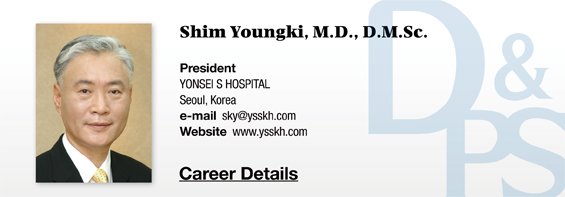▶ Previous Artlcle : #6-3. Diagnosis and evaluation of varicose veins
Table 1. Treatment Goals for Chronic Venous Disease
Normalized the blood flow and elimination of relux
Solve the venous hypertension
Solve the heavy leg syndrome
Prevention of accompanying complication of varicose vein such as venous ulcer, thrombophlebitis, deep vein problems
Concept of well being & Enhance the quality of life
Cosmetic purpose
Table 2. Types of treatment
conservative therapy
vein sclerotherapy
Ultrasound-guided sclerotherapy
Surgery
Latest treatment modalities; EVLT, TRIVEX, VNUS
Treatment methods of lower limb varicose veins are largely categorized into conservative therapy, vein sclerotherapy and surgery. As various treatment methods exist, it is important to select the right treatment based on accurate diagnosis. However, as varicose veins is not life-threatening and the treatment goal is often aesthetic improvement, it is advisable to choose a safe treatment with a low risk of complications.
[Advertisement] A-One LITE(Facial Diagnosys System) – Manufacturer: BOMTECH(www.bomtech.net)
Conservative Therapy
1. Compression therapy
Varicose veins with non-serious symptoms can be improved by medical compression stockings. Conservative therapy is selected in patients contraindicated for surgery or vein sclerotherapy (i.e. patients with poor prognosis, elderly or obese patients, patients with post-pregnancy phlebectasis, etc.).
Medical compression stockings alleviate symptoms and prevent symptom worsening but does not provide cure. Pressurizing the lower limbs with medical compression stockings improves venous return and calf muscle pump function. Compression raises tissue pressure and returns extracellular fluid to the capillary venous system to reduce edema and blood congestion. Therefore, elastic support should provide appropriate distribution of pressure.
Medical compression stockings vary in elasticity depending on the composition of materials such as natural rubber (elastcity 80%), lycra (elasticity 50%), and nylon (elasticity 300%). They are designed to provide even, physiological compression. In other words, when the pressure of the ankle is 100%, it declines as it goes upward to 70% at the knee and 40% at the inguinal region to promote venous return (graduated compression). For this reason, it is very uncomfortable to wear medical compression stockings designed for varicose veins.
Stockings are categorized from class I through IV (class I light 20~30mmHg, class II medium 30~40mmHg, class III strong 40~50mmHg, class IV very strong 50~60mmHg) based on the degree of pressure on tissues. For varicose veins, class II (30-40mmHg) stockings are prescribed before and after varicose veins treatment, despite slight variability based on severity of varicose veins. Patients are recommended to put on medical compression stockings in the morning and take them off at night before going to bed.
Other methods of conservative therapy that patients can try at home without resorting to surgery or medical supervision are as following.
Patients should exercise their calf muscle pumps through frequent and regular leg exercise. If they have to stay standing for a long time at work, walking up the stairs for 10 minutes every hour can help. If they have severe deep vein valve insufficiency, they should consider switching to a sitting job. Complication from venous hypertension can be alleviated by elevating the legs to lower hydrostatic pressure. Avoid long-term erect position and frequently walk to lower limb venous pressure. Regular walking exercise is recommended, lower limbs should be elevated in long-term sitting position and topical cream should be applied on legs every 2-3 days. It is advisable to avoid stimulation or burns as well as sudden, strenuous exercise. Weight loss can also help varicose veins.
-To be continued-
▶ Next Artlcle : #7-2. Conservative Therapy





















